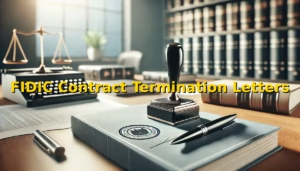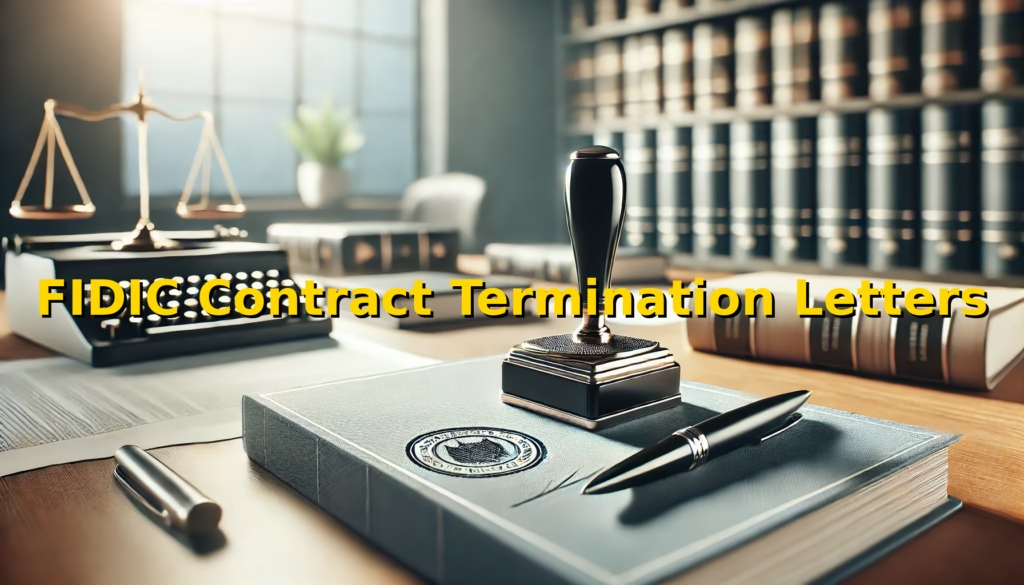Table of Contents
ToggleThorough Interpretation of Clause 11.2
Purpose: Clause 11.2 explicitly states that the Contractor is responsible for the cost and risk of remedying defects in specific scenarios. This clause serves as a financial safeguard for the Employer by clearly delineating the conditions under which the Contractor must bear the costs.
Implications: The clause has legal and financial implications for both the Contractor and the Employer. It can serve as a basis for dispute resolution and can significantly impact the project’s budget and timeline.
Primary Aspects:
- Design of the Works: The Contractor is responsible for defects arising from the design, except for the parts for which the Employer is responsible.
- Quality of Plant, Materials, or Workmanship: The Contractor bears the cost if these do not meet the contract’s standards.
- Improper Operation or Maintenance: Costs arising from improper operation or maintenance attributable to the Contractor are their responsibility.
- Failure to Comply: Any other failure by the Contractor to meet contractual obligations falls under this clause.
Relevant Illustrations: For instance, if a defect arises due to the poor quality of materials used, the Contractor would be responsible for the costs of remedying the defect.
Case Studies: In a real-world scenario, if a building’s HVAC system fails due to poor installation, Clause 11.2 would require the Contractor to bear the costs of fixing it.
Interaction with Other Clauses
Clause 11.1 (Completion of Outstanding Work and Remedying Defects): Clause 11.2 is a sub-part of 11.1 and specifies the financial responsibilities related to remedying defects.
Clause 13.3 (Variation Procedure): If the work is attributable to any other cause not listed in Clause 11.2, then the Variation Procedure under Clause 13.3 will apply.
Main Points to Keep in Mind
Legal Consultation: Consult legal advisors to ensure that the implementation of Clause 11.2 is in line with contractual obligations.
Documentation: Maintain meticulous records of all activities related to defect identification and remediation.
Prompt Notification: The Employer must promptly notify the Contractor if the work is attributable to any other cause, triggering Clause 13.3.
Real-World Instances and Case Studies Concerning Clause 11.2
Highway Construction Project: In a project involving the construction of a highway, the contractor used substandard materials for the road surface. This led to early wear and tear, triggering Clause 11.2. The contractor had to bear the costs of rework.
Commercial Building Project: In a commercial building project, the HVAC system failed within the Defects Liability Period. Clause 11.2 was invoked, and the contractor had to remedy the defect at their own cost.
Industrial Plant Construction: In an industrial plant construction, a defect emerged in the machinery due to a design flaw. Since the design was the contractor’s responsibility, they had to bear the costs as per Clause 11.2.
Residential Construction: In a residential construction project, the contractor used subpar electrical wiring. When defects emerged, Clause 11.2 was invoked, making the contractor financially responsible for the remediation.
Flowchart for Implementing Clause 11.2 and Its Relationship to Other Clauses

Explanation of the Flowchart
The flowchart aims to visually represent the process of implementing Clause 11.2 and its relationship with other clauses in a FIDIC contract.
Start: Identify Defect: The process begins with the identification of a defect in the project. This could be anything from poor-quality materials to design flaws.
Assess Responsibility: The next step is to assess who is responsible for the defect. This could either be the Contractor or the Employer.
- Contractor: If the Contractor is responsible, the process moves to invoking Clause 11.2.
- Calculate Cost: The Contractor calculates the cost of remedying the defect.
- Inform Employer: The Contractor then informs the Employer of the calculated cost.
- Employer: If the Employer is responsible, Clause 13.3 (Variation Procedure) is invoked.
- Consider as Variation: The defect is considered as a variation to the contract, and the Employer informs the Contractor.
- Contractor: If the Contractor is responsible, the process moves to invoking Clause 11.2.
Review & Approve: Both parties review the calculated costs and the remedial actions.
- Approved: If approved, the budget is updated.
- Not Approved: If not approved, the defect and costs are reassessed.
Close Defect: Once the defect is remedied and the costs are approved, the defect is closed.
End: Update Documentation: Finally, all the documentation is updated to reflect the remedial actions and costs.
Sample Letter for Clause 11.2 'Cost of Remedying Defects'
[Your Company Name]
[Your Address]
[City, State ZIP Code]
[Email Address]
[Today’s Date]
[Employer’s Name]
[Employer’s Address]
[City, State ZIP Code]
Subject: Request for Action under Clause 11.2 ‘Cost of Remedying Defects’
Dear [Employer’s Name],
We are writing to bring your attention to certain defects that have been identified in the ongoing project, as governed by our FIDIC contract. These defects fall under the purview of Clause 11.2 ‘Cost of Remedying Defects’.
#### Description of Defects:
[List the defects in detail, providing technical aspects and evidence if possible.]
#### Impact on Project:
These defects have significant implications for the project timeline, budget, and overall success.
#### Contractor’s Responsibilities:
According to Clause 11.2, these defects are to be remedied at our cost, as they are attributable to [specify the reason, e.g., design, materials, workmanship, etc.].
#### Cost Estimate:
We have prepared a detailed cost estimate for remedying these defects, which includes the following:
– Labor: [Amount]
– Materials: [Amount]
– Equipment: [Amount]
– Other: [Amount]
Total: [Total Amount]
#### Proposed Timeline:
We propose to resolve these defects by [Date], subject to your approval.
We request a meeting at your earliest convenience to discuss this matter further. We are committed to resolving these issues promptly and maintaining a positive working relationship.
Thank you for your immediate attention to this matter. We look forward to your prompt response.
Yours faithfully,
[Your Name]
[Your Position]
Structured Checklists for Clause 11.2
Checklist for Execution of Clause 11.2
| Step | Task | Responsible Party | Deadline | Status |
|---|---|---|---|---|
| 1 | Identify Defects | Engineer | ||
| 2 | Notify Employer | Contractor | ||
| 3 | Assess Responsibility | Both Parties | ||
| 4 | Prepare Cost Estimate | Contractor | ||
| 5 | Review & Approve | Employer | ||
| 6 | Execute Remedial Work | Contractor | ||
| 7 | Update Documentation | Both Parties |
Checklist for Deployment of Clause 11.2
| Step | Task | Responsible Party | Deadline | Status |
|---|---|---|---|---|
| 1 | Confirm Defects | Engineer | ||
| 2 | Obtain Approvals | Contractor | ||
| 3 | Allocate Resources | Contractor | ||
| 4 | Monitor Progress | Both Parties | ||
| 5 | Complete Remedial Work | Contractor |
Checklist for Supervision of Clause 11.2
| Step | Task | Responsible Party | Deadline | Status |
|---|---|---|---|---|
| 1 | Regular Updates | Contractor | ||
| 2 | Site Visits | Engineer | ||
| 3 | Quality Checks | Engineer | ||
| 4 | Final Inspection | Both Parties | ||
| 5 | Close Defect | Both Parties |
Frequently Asked Questions (FAQs) for Clause 11.2 'Cost of Remedying Defects'
1. What is the purpose of Clause 11.2?
Answer: The purpose of Clause 11.2 is to outline who is responsible for the cost and risk associated with remedying defects in a construction project under a FIDIC contract. It specifies the conditions under which the Contractor must bear the costs of fixing defects.
2. What types of defects fall under Clause 11.2?
Answer: Defects that are attributable to the Contractor’s design, materials, workmanship, or failure to comply with other contractual obligations fall under Clause 11.2.
3. What happens if the defect is not the Contractor’s fault?
Answer: If the defect is attributable to any other cause not listed in Clause 11.2, then Clause 13.3 ‘Variation Procedure’ will apply, and the Employer will be responsible for the costs.
4. How is the cost of remedying defects calculated?
Answer: The Contractor is usually responsible for calculating the cost, which may include labor, materials, equipment, and other associated expenses. This cost estimate is then submitted to the Employer for approval.
5. Can the Employer dispute the cost estimate provided by the Contractor?
Answer: Yes, the Employer has the right to review and either approve or dispute the cost estimate. If not approved, the defect and costs may need to be reassessed.
6. What is the timeline for remedying defects under Clause 11.2?
Answer: The timeline can vary depending on the severity of the defects and the project’s overall schedule. Both parties usually agree on a reasonable timeline for remedying the defects.
7. What documentation is required for Clause 11.2?
Answer: Detailed records of defect identification, cost estimation, and remedial actions are essential. Both parties should maintain meticulous documentation to avoid future disputes.
8. How does Clause 11.2 interact with other clauses?
Answer: Clause 11.2 often works in tandem with Clause 11.1, which defines the completion of outstanding work and remedying defects. It may also interact with Clause 13.3 if the Employer is responsible for the defect.
9. What are the implications of not adhering to Clause 11.2?
Answer: Failure to adhere to this clause can result in legal disputes, delays, and additional costs. It can also affect the project’s budget and timeline.
10. Can Clause 11.2 be modified or excluded from the contract?
Answer: While it is a standard clause in FIDIC contracts, any modifications or exclusions must be mutually agreed upon by both parties and documented in the contract.
Common Misunderstandings Associated with Clause 11.2 'Cost of Remedying Defects'
1. Scope of Responsibility
- Misunderstanding: Many assume that the Contractor is always responsible for all defects.
- Clarification: The Contractor is responsible only for defects that are specifically attributable to their actions or omissions as outlined in Clause 11.2.
2. Cost Estimation
- Misunderstanding: The Contractor’s cost estimate for remedying defects is final.
- Clarification: The Employer has the right to review and either approve or dispute the cost estimate provided by the Contractor.
3. Timeline for Remedial Actions
- Misunderstanding: The Contractor can take as much time as needed to remedy the defects.
- Clarification: The timeline for remedial actions is usually agreed upon by both parties and should be reasonable.
4. Variation Procedure
- Misunderstanding: Clause 11.2 is the only clause that deals with the cost of remedying defects.
- Clarification: If the defect is attributable to any other cause not listed in Clause 11.2, then Clause 13.3 ‘Variation Procedure’ will apply.
5. Documentation
- Misunderstanding: Verbal agreements are sufficient for actions under Clause 11.2.
- Clarification: Detailed records of all activities related to Clause 11.2 should be maintained to avoid future disputes.
6. Employer’s Responsibility
- Misunderstanding: The Employer is never responsible for the cost of remedying defects.
- Clarification: If the defect is attributable to the Employer or any other cause not listed in Clause 11.2, the Employer may be responsible for the costs.
7. Legal Implications
- Misunderstanding: Non-compliance with Clause 11.2 will not have any legal repercussions.
- Clarification: Failure to adhere to Clause 11.2 can result in legal disputes and may affect the overall contract.
8. Interactions with Other Clauses
- Misunderstanding: Clause 11.2 operates independently of other clauses in the contract.
- Clarification: Clause 11.2 often interacts with other clauses like Clause 11.1 and Clause 13.3, affecting its implementation.
9. Defect Identification
- Misunderstanding: Any party can identify defects.
- Clarification: Typically, the Engineer or a designated authority is responsible for the formal identification of defects.
10. Modification of Clause 11.2
– **Misunderstanding**: Clause 11.2 is non-negotiable and cannot be modified.
– **Clarification**: While it is a standard clause in FIDIC contracts, any modifications must be mutually agreed upon and documented in the contract.




